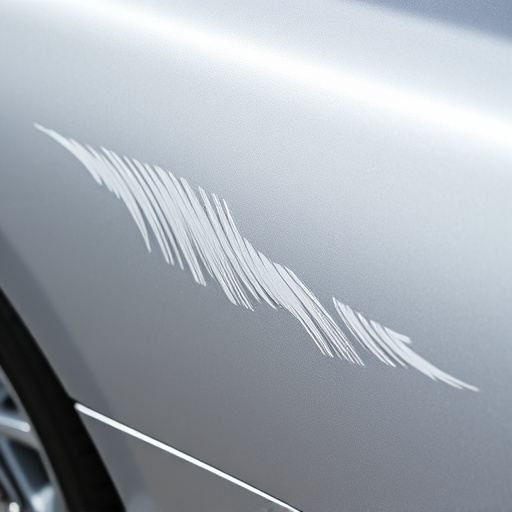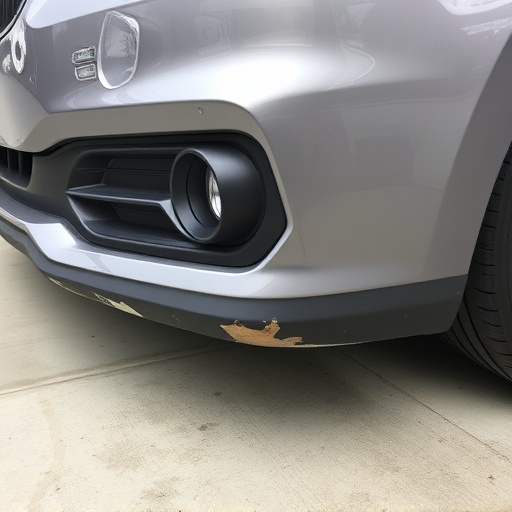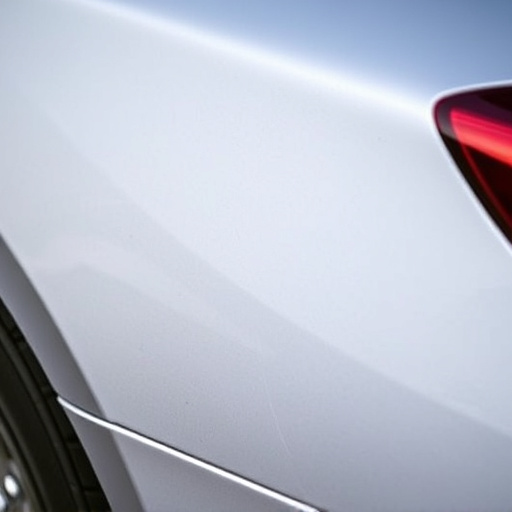Unlocking Tesla Collision Repair: Official Network Benefits

Tesla offers a dedicated collision repair network with authorized workshops and technicians accessib…….
In the rapidly evolving landscape of automotive repair and maintenance, the Tesla collision repair network stands as a beacon of innovation and efficiency. This comprehensive ecosystem is reshaping how vehicle owners, especially electric car enthusiasts, approach post-collision services. The network’s focus on cutting-edge technology, specialized training, and streamlined processes has positioned it as a game-changer in the aftermarket industry. This article aims to delve into the intricacies of Tesla’s collision repair network, exploring its global impact, technological prowess, and the challenges it faces while paving the way for a sustainable future. By the end, readers will gain a comprehensive understanding of why this network is not just a convenience but an essential component of modern mobility.
The Tesla collision repair network refers to the intricate web of authorized service centers and partner workshops strategically located worldwide, designed to handle post-collision repairs for Tesla vehicles. It represents Tesla’s direct response to the growing demand for specialized and high-quality repair services for its electric car lineup. At its core, this network is built on several key components:
Authorized Service Centers (ASCs): These are Tesla-owned facilities that serve as the cornerstone of the collision repair network. ASCs are equipped with state-of-the-art equipment and trained technicians specialized in Tesla vehicle repairs. They handle a wide range of services, from minor dents and scratches to complex accident damage.
Partner Workshops: To extend its reach and cater to remote areas, Tesla collaborates with independent workshops, transforming them into partner shops. These businesses undergo rigorous training and adhere to Tesla’s stringent quality standards, ensuring customers receive consistent service regardless of their location.
Digital Infrastructure: Tesla leverages its digital prowess by integrating advanced software solutions into the network. This includes repair management systems, diagnostic tools, and a centralized data platform that facilitates efficient communication and knowledge sharing between centers.
Historically, Tesla recognized the need for a dedicated collision repair network as its vehicle sales skyrocketed. By establishing this structured system, Tesla aims to ensure customer satisfaction, maintain vehicle value, and promote safety by adhering to strict repair standards. The network’s design allows for consistent service quality while empowering customers with convenient access to repairs.
Tesla’s collision repair network has made significant inroads internationally, leaving a marked impact on the global automotive aftermarket. As of 2023, Tesla operates hundreds of ASCs across numerous countries, including the United States, Canada, Europe, and Asia-Pacific regions. This expansive presence is driven by several key trends:
| Region | Number of ASCs (2023) | Growth Trend |
|---|---|---|
| North America | 150+ | Steady growth, with a focus on urban centers |
| Europe | 70+ | Rapid expansion following regulatory changes |
| Asia-Pacific | 40+ | Driven by rising electric vehicle (EV) adoption |
These numbers showcase Tesla’s aggressive global expansion strategy. The company’s direct approach to service delivery has filled a void in the market, especially for remote areas lacking specialized repair facilities. As more regions embrace electric mobility, Tesla’s network is poised to play a pivotal role in shaping the future of post-collision services.
The Tesla collision repair network operates within a dynamic economic landscape, influenced by several factors:
Market Demand: The growing popularity of Tesla vehicles has led to an increased demand for specialized repairs, creating a viable market opportunity. As more drivers embrace electric cars, the need for dedicated collision centers will continue to rise.
Investment and Partnerships: Tesla’s strategic investments in its network demonstrate its commitment to long-term growth. The company has also forged partnerships with established automotive service providers, ensuring a robust support system for its repair network.
Cost Dynamics: The network’s efficient processes aim to reduce repair costs, benefiting both customers and the company. By streamlining operations and utilizing advanced diagnostics, Tesla can maintain competitive pricing while ensuring high-quality work.
Economic Impact: On a larger scale, the collision repair network contributes to local economies by creating job opportunities and generating revenue for authorized centers and partner shops.
Tesla’s collision repair network is at the forefront of embracing technological advancements, revolutionizing how repairs are conducted:
Autonomous Repair Robots: Tesla has deployed robotic systems in its ASCs to assist in various tasks, from welding to paint application. These robots enhance precision and efficiency, reducing repair times and potential errors.
Advanced Diagnostics: The network utilizes sophisticated diagnostic tools capable of identifying issues with Tesla vehicles’ complex electrical systems and specialized components. This ensures accurate repairs and helps prevent future problems.
3D Printing for Repairs: Tesla has explored 3D printing technology to create custom parts, offering a sustainable and cost-effective solution for rare or discontinued components.
Digital Twin Technology: This concept involves creating virtual replicas of vehicles, enabling technicians to access detailed design information and perform remote diagnostics, enhancing the repair process.
The Tesla collision repair network operates within a web of policies and regulations that vary across jurisdictions. These frameworks play a crucial role in shaping the industry’s standards and practices:
Safety Standards: Strict safety regulations govern vehicle repairs, ensuring that all work meets set criteria. For electric vehicles, additional considerations are required due to unique battery and electrical systems.
Environmental Compliance: Many regions have implemented eco-friendly practices for vehicle repairs, encouraging the use of recycled materials and sustainable business models. Tesla’s network aligns with these goals by adopting efficient and environmentally conscious processes.
Consumer Protection Laws: These laws protect customers from fraudulent practices and ensure fair pricing. Tesla’s transparent pricing policies and customer-centric approach comply with these regulations.
International Trade Agreements: In regions with free trade, collaboration between Tesla and local partners is facilitated, fostering economic growth and efficient service delivery.
Despite its numerous achievements, the Tesla collision repair network faces several challenges that require strategic solutions:
Geographic Coverage: While Tesla has made significant progress globally, certain regions, especially rural areas, still lack adequate collision repair facilities. Expanding the network to cover all areas is a complex task but essential for comprehensive service.
Workforce Shortages: The demand for skilled technicians outstrips supply in many markets. Addressing this gap through training programs and attracting talent can ensure the network maintains its quality standards.
Competition from Independent Shops: Independent repair shops, especially those offering generic repairs, may present competition. Tesla can counter this by emphasizing specialized EV knowledge and quality assurance.
Regulatory Compliance: Keeping up with evolving regulations across different regions is a continuous challenge. Regular communication and training sessions for technicians are necessary to stay compliant.
The Tesla service center in Berlin showcases the network’s ability to deliver top-tier services in a bustling metropolis. This center handles a high volume of repairs and has earned a reputation for quick turnaround times without compromising quality. Its success can be attributed to several factors:
Strategic Location: Situated in the heart of Berlin, the center caters to a diverse customer base, including locals and tourists with Tesla vehicles.
Trained Technicians: The team comprises highly skilled German technicians who undergo intensive training on Tesla vehicles, ensuring they meet the brand’s high standards.
Efficient Processes: Advanced diagnostics and streamlined repair procedures enable the center to identify and fix issues promptly, leading to satisfied customers.
Tesla has successfully collaborated with a local workshop in Tokyo, demonstrating its commitment to global partnerships. This shop, named “Electric Repair Pro,” offers specialized services for Tesla vehicles while incorporating traditional Japanese craftsmanship. Their success story includes:
Cultural Fusion: The partnership blends Tesla’s cutting-edge technology with Japanese attention to detail, resulting in unique and high-quality repairs.
Community Engagement: Electric Repair Pro actively participates in local events, increasing brand visibility and fostering a positive relationship with the community.
Sustainable Practices: They adopt eco-friendly materials and methods, aligning with Tesla’s sustainability mission.
As we peer into the future, several trends and developments will shape the trajectory of Tesla’s collision repair network:
Expansion in Emerging Markets: With electric vehicle adoption on the rise, Asia and Africa present significant growth opportunities for the network.
Advanced Automation: Further integration of automation and AI will enhance efficiency, reduce errors, and improve safety.
Digital Transformation: The network’s digital infrastructure will evolve, enabling real-time data sharing, predictive analytics, and remote diagnostics.
Sustainability Focus: Tesla’s commitment to sustainability will drive the adoption of eco-friendly practices, materials, and recycling initiatives within its network.
Customer Experience Enhancements: Personalized services, mobile apps for booking repairs, and transparent pricing will elevate customer satisfaction.
The Tesla collision repair network is a testament to innovation and forward-thinking in the automotive industry. Its global reach, technological prowess, and commitment to quality have set a new standard for post-collision services. As electric mobility continues to gain momentum, this network will play an increasingly vital role in ensuring safety, convenience, and sustainability for Tesla vehicle owners worldwide.
By addressing challenges, embracing emerging trends, and fostering strategic partnerships, Tesla is poised to maintain its leadership position in the aftermarket space. The future of collision repair looks bright, efficient, and environmentally conscious, all thanks to pioneers like Tesla who dare to redefine traditional service models.
Q: How do I find a Tesla Authorized Service Center near me?
A: You can locate ASCs using the official Tesla website or mobile app by entering your location. The results will provide contact details, addresses, and available services for each center.
Q: What happens if my Tesla vehicle needs emergency repair outside regular business hours?
A: For urgent repairs, you can contact your nearest ASC or partner shop directly. Many centers offer 24/7 support lines or mobile service teams to assist in such situations.
Q: Are all Tesla collision repairs covered under warranty?
A: Generally, minor damages are not covered by the standard warranty. However, for accident-related repairs, Tesla offers extended warranty options that vary based on your vehicle’s mileage and ownership duration.
Q: Can I get my Tesla vehicle repaired at any independent workshop?
A: While some independent shops may offer Tesla repair services, they might not have access to the brand’s proprietary tools or training. Using an authorized center ensures consistent quality and compatibility with your vehicle’s systems.
Q: How does Tesla ensure the environmental sustainability of its collision repair network?
A: Tesla promotes eco-friendly practices by encouraging recycling, using sustainable materials when possible, and implementing efficient processes that reduce waste and energy consumption.

Tesla offers a dedicated collision repair network with authorized workshops and technicians accessib…….

The Tesla collision repair network relies on factory-trained technicians to maintain high-quality st…….

The Tesla collision repair network stands out for efficient glass replacement and specialized auto r…….

The growing Tesla collision repair network specializes in aluminum panel repairs, ensuring high-qual…….